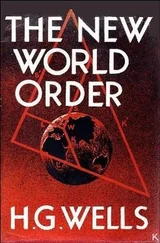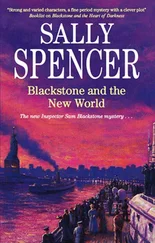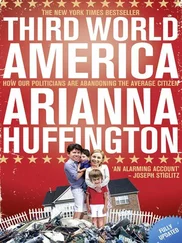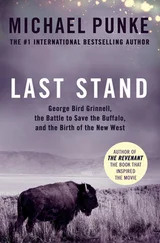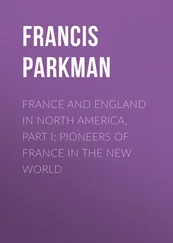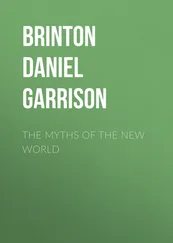It must have seemed like a no-brainer: buy these ever more valuable houses and cars with money you are, in effect, paid to borrow. But, in October, after the krona collapsed, the yen and Swiss francs they must repay became many times more expensive. Now many Icelanders—especially young Icelanders—own $500,000 houses with $1.5 million mortgages, and $35,000 Range Rovers with $100,000 in loans against them. To the Range Rover problem there are two immediate solutions. One is to put it on a boat, ship it to Europe, and try to sell it for a currency that still has value. The other is set it on fire and collect the insurance: Boom!
The rocks beneath Reykjavík may be igneous, but the city feels sedimentary: on top of several thick strata of architecture that should be called Nordic Pragmatic lies a thin layer that will almost certainly one day be known as Asshole Capitalist. The hobbit-size buildings that house the Icelandic government are charming and scaled to the city. The half-built oceanfront glass towers meant to house newly rich financiers and, in the bargain, block everyone else’s view of the white bluffs across the harbor are not.
THE BEST WAY to see any city is to walk it, but everywhere I walk Icelandic men plow into me without so much as a by-your-leave. Just for fun I march up and down the main shopping drag, playing chicken, to see if any Icelandic male would rather divert his stride than bang shoulders . Nope. On party nights—Thursday, Friday, and Saturday—when half the country appears to take it as a professional obligation to drink themselves into oblivion and wander the streets until what should be sunrise, the problem is especially acute. The bars stay open until five in the morning, and the frantic energy with which the people hit them seems more like work than work. Within minutes of entering a nightclub called Boston I get walloped, first by a bearded troll who, I’m told, ran an Icelandic hedge fund. Just as I’m recovering I get plowed over by a drunken senior staffer at the Central Bank. Perhaps because he is drunk, or perhaps because we had actually met a few hours earlier, he stops to tell me, “Vee try to tell them dat our problem was not a solfency problem but a likvitity problem, but they did not agree,” then stumbles off. It’s exactly what Lehman Brothers and Citigroup said: if only you’d give us the money to tide us over, we’ll survive this little hiccup.
A nation so tiny and homogeneous that everyone in it knows pretty much everyone else is so fundamentally different from what one thinks of when one hears the word “nation” that it almost requires a new classification. Really, it’s less a nation than one big extended family. For instance, most Icelanders are by default members of the Lutheran Church. If they want to stop being Lutherans they must write to the government and quit; on the other hand, if they fill out a form, they can start their own cult and receive a subsidy. Another example: the Reykjavík phone book lists everyone by his first name, as there are only about nine surnames in Iceland, and they are derived by prefixing the father’s name to “son” or “dóttir.” It’s hard to see how this clarifies matters, as there seem to be only about nine first names in Iceland, too. But if you wish to reveal how little you know about Iceland, you need merely refer to someone named Siggor Sigfússon as “Mr. Sigfússon,” or Kristin Pétursdóttir as “Ms. Pétursdóttir.” At any rate, everyone in a conversation is just meant to know whomever you’re talking about, so you never hear anyone ask, “Which Siggor do you mean?”
Because Iceland is really just one big family, it’s simply annoying to go around asking Icelanders if they’ve met Björk. Of course they’ve met Björk; who hasn’t met Björk? Who, for that matter, didn’t know Björk when she was two? “Yes, I know Björk,” a professor of finance at the University of Iceland says in reply to my question, in a weary tone. “She can’t sing, and I know her mother from childhood, and they were both crazy. That she is so well known outside of Iceland tells me more about the world than it does about Björk.”
One benefit of life inside a nation masking an extended family is that nothing needs to be explained; everyone already knows everything that needs to be known. I quickly find that it is an even greater than usual waste of time to ask directions, for instance. Just as you are meant to know which Bjornjolfer is being spoken of at any particular moment, you are meant to know where you are on the map. Two grown-ups—one a banker whose office is three blocks away—cannot tell me where to find the prime minister’s office. Three more grown-ups, all within three blocks of the National Gallery of Iceland, have no idea where to find the place. When I tell the sweet middle-aged woman behind the counter at the National Museum that no Icelander seems to know how to find it, she says, “No one actually knows anything about our country. Last week we had Icelandic high school students here and their teacher asked them to name an Icelandic nineteenth-century painter. None of them could. Not a single one! One said, ‘Halldór Laxness?’!” (Laxness won the 1955 Nobel Prize in Literature, the greatest global honor for an Icelander until the 1980s, when two Icelandic women, in rapid succession, captured Miss World titles.)
THE WORLD IS now pocked with cities that feel as if they are perched on top of bombs. The bombs have yet to explode, but the fuses have been lit, and there’s nothing anyone can do to extinguish them. Walking around Manhattan just before the collapse of Lehman Brothers, you saw empty stores, empty streets, and, even when it was raining, empty taxis; the people had fled before the bomb exploded. Reykjavík had the same feel of incipient doom, but the fuse burned strangely. The government mandates three months’ severance pay, and so the many laid-off bankers were paid until early February, when the government promptly fell. Against a basket of foreign currencies the krona is worth less than a third of its boom-time value. As Iceland imports everything but heat and fish, the price of just about everything is, in mid-December, about to skyrocket. A new friend who works for the government tells me that she went into a store to buy a lamp. The clerk told her he had sold the last of the lamps she was after but offered to order it for her, from Sweden—at nearly three times the old price.
Still, a society that has been ruined overnight doesn’t look much different from how it did the day before, when it believed itself to be richer than ever. The Central Bank of Iceland is a case in point. Almost certainly Iceland will adopt the euro as its currency, and the krona will cease to exist. Without it there is no need for a central bank to maintain the stability of the local currency and control interest rates. Inside the place stews David Oddsson, the architect of Iceland’s rise and fall. Back in the 1980s, Oddsson had fallen under the spell of Milton Friedman, the brilliant economist who was able to persuade even those who spent their lives working for the government that government was a waste of life. So Oddsson went on a quest to give Icelandic people their freedom, by which he meant freedom from government controls of any sort. As prime minister he lowered taxes, privatized industry, freed up trade, and, finally, in 2002, privatized the banks. At length, weary of prime-ministering, he got himself appointed governor of the Central Bank—even though he had no experience in banking and was, by training, a poet.
After the collapse, this disciple of Milton Friedman holed up in his office inside the bank, declining all requests for interviews. Senior government officials tell me, seriously, that they assume he spends most of his time writing poetry. (In February 2009 he would be asked by a new government to leave.) On the outside, however, the Central Bank of Iceland is still an elegant black temple set against the snowy bluffs across the harbor. Sober-looking men still enter and exit. Small boys on sleds rocket down the slope beside it, giving not a rat’s ass that they are playing at ground zero of the global calamity. It all looks the same as it did before the crash, even though it couldn’t be more different. The fuse is burning its way toward the bomb.
Читать дальше

